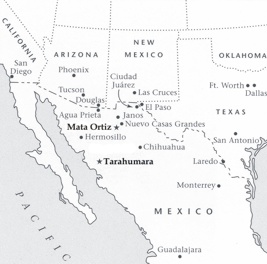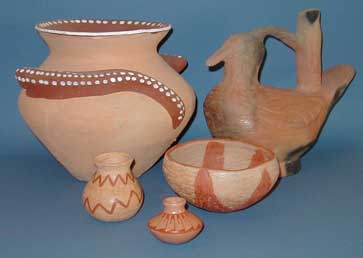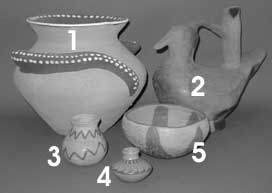 ClayHound Web
- Tarahumara
Pottery
ClayHound Web
- Tarahumara
PotteryReturn to:
|
Tarahumara is located in north-central Mexico. The pottery is distinguished by its dark red color. |
|
|
|
|
|
|
|
 |
The ancestors of the Tarahumara most likely migrated from Asia using the Bering Strait somewhere around fifteen to twenty thousand years ago. These ancestors were hunters and gatherers who greatly advanced and developed throughout the years as agricultural development entered their culture. As time went on, most of them probably descended with the Aztecs further south. However, no real written history is found of this Indian tribe before the Spaniards came in the sixteenth century. Coronado’s expedition was perhaps their first contact with the Europeans. Later on, in 1607 a Jesuit missionary known as Father Juan Fonte created the first Jesuit mission in their area. This establishment significantly affected the lives of the Tarahumara. The Jesuits built almost thirty missions throughout the following hundred and fifty years. While they did introduce the Tarahumara to Catholicism, domestic animals, and much more, they merely took |
|
advantage of their culture. They tried to force the Indians to live in more domestic, church-centered villages. They also made the Indians their slaves, having them work in the mines and on Spanish haciendas. In addition, the Spaniards were intruding on their land and attempting to take control as well. This, of course, caused rebellious outbreaks amongst the Tarahumara. Because of their strong will and knowledge of the land, they were finally able to break free from the Spaniards and Jesuits. Today, there are still about 50,000 Tarahumara Indians living in Mexico today. They remain in the Sierra Madre Occidental in an area called Copper Canyon. They continue to live very isolated lives, unmixed with any other tribes. They are the most primitive of all the Indian tribes and the least influenced by modern society. |
|

